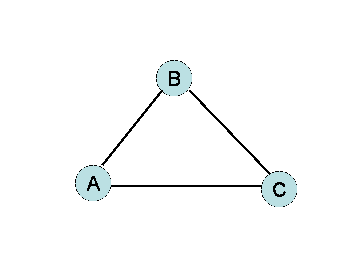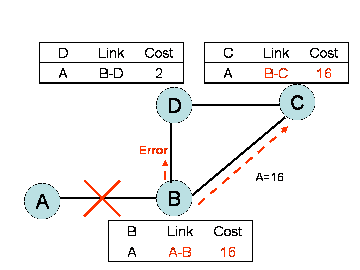...................................................................................................................................................................................
 Evaluate RIP Evaluate RIP
From the result of simulation and features of RIP based on Bellman-Ford algorithm, we confirmed following problems.
- limitation of network scale
- Count to infinity
- Speed of convergence
1. Because maximum number of hops is 15 in RIP, network size is limited to be small one. There is no way to solve the problem by using RIP.
2. As for count to infinity, the specific looping scenario can be avoided using a technique known as split-horizon with poisoned reverse. The idea is simple: in fig.2, if C routes through B to get to destination A, then C will advertise to B that its distance to A is infinity. C will continue telling this to B as long as it routes to A via B. Since B believes that C has no path to A, B will never attempt to route to A via C, as long as C continues to route to A via B. However, split-horizon with poison reverse does not always solve the count to infinity problem. For instance, count to infinity comes again in the case D tells C prior to C. (Fig.3)
 |
|
 |
| Fig.2 Split horizon with poisoned reverse |
|
Fig.3 Count to infinity again |
3. We can speed up the convergence speed with triggered update; which allows immediate update the table if there are any state changes such as link down. In RIP simulation, if any link down, we can update the state immediately by step mode.
 Conclusion Conclusion
We reported the Java applet of the RIP routing protocol based on Bellman-Ford algorithm. The effectiveness of this routing protocol was re-confirmed by conducting a simulation. We are going to work to realize a more realistic and complicated network based on this study.
Thanks.
|
||Prev||Next||
(c) Marcos Andres Diaz & Yasuko Iwai
Boston University, College of Engineering
|


 Conclusion
Conclusion
